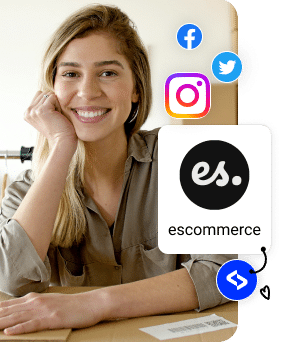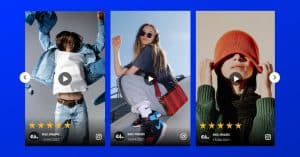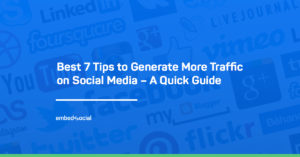Even though it seemed like something that would come in a distant future, it seems like we fast-forwarded the time to a point where Artificial Intelligence (AI) became part of our everyday lives.
You’re probably asking ChatGPT (one of the most popular AI writing tools) daily questions. Whether it’s simple questions like “What will the weather be like in the next week?” or something professional like “Write me a LinkedIn post about the benefits of remote work,” we’ve all made ChatGPT our best friend.
If you use user-generated content (UGC) in your marketing, you’re most certainly tempted to generate content faster with AI and replace at least some of it.
If you still don’t know how to go about it, we’re here to help.
- About User-Generated Content (UGC)
- About AI-Generated Content (AIGC)
- Challenges with UGC and AIGC
- Comparison of User-Generated and AI-Generated Content
- Examples of Content that AI can’t produce
- When to use UGC or AI content
- Finding the Right Balance: Combining User-Generated and AI-Generated Content
- The Future of AI-Generated Content
- Conclusion
- FAQs about AI v.s UGC
In this article, we’re comparing user-generated content to AI content creation. We’ll examine the benefits and challenges of both approaches and provide recommendations for when it is most appropriate to use each approach.
About User-Generated Content (UGC)
UGC meaning
Companies collect user-generated content from many different channels. It can become from blogs, forums, websites, social media, etc. Here are some examples of UGC:
- A blog post
- An Instagram post
- A Reddit message
- A forum post
- A YouTube video
- A tweet
- A Facebook comment
UGC’s primary distinguishing feature is that it is generated by users, not by platforms or their owners.
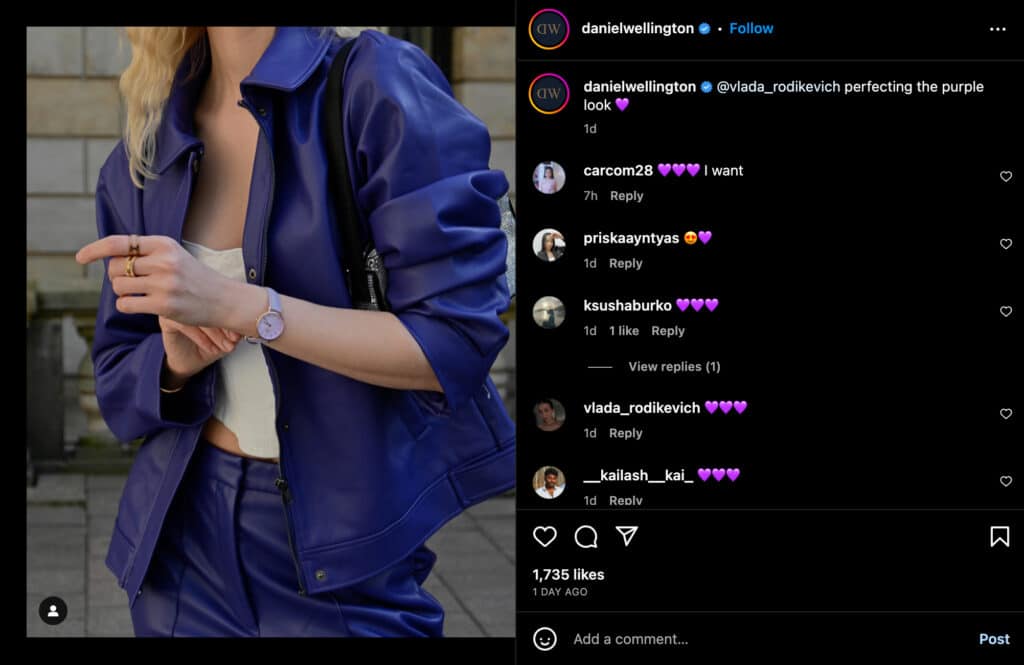
Since users have a greater sense of ownership over their own content, UGC may therefore be a valuable tool for fostering community and engagement on a site.
UGC can also offer insightful information about user behavior and preferences, which can be leveraged to enhance goods and services.
Advantages of user-generated content
User-generated content (UGC) may benefit brands in several ways, particularly when gaining social proof and establishing trust.
Here are some of the biggest advantages of user-generated content vs. AI-generate content:
- More authentic content: UGC can be more trustworthy and relatable than AI-generated content because it originates from actual people with real experiences. Consumers may therefore regard UGC as more dependable and trustworthy and be more inclined to believe statements stated in reviews of products, for example.
- It’s free (or at least economical): UGC is an economical content creation method. When compared to the price of creating and producing branded content, it is created by users for free, which can result in significant financial savings. This is especially effective for small firms or startups with minimal marketing resources.
- Content that generates interactions: UGC has a higher chance of generating user interaction than branded content. Users are more likely to engage with a brand or product when they observe other users doing so. This may boost interest and foster community around the company or item.
- It makes content fun and diverse: UGC may offer a wide variety of content that brands cannot produce independently. This can include images, videos, and other kinds of content that offer distinctive viewpoints on the company or item. UGC can also contribute to creating fresh concepts for branded material, which will benefit marketing initiatives.
- Better search engine rankings: UGC can also help a brand or product’s search engine optimization (SEO). Users can increase the number of backlinks to a company’s website and thus boost its search engine results by creating and sharing online content. This might enhance the website’s exposure and attract more visitors, increasing conversions and sales.

Collecting and publishing UGC generally means having a lot of authentic and relatable content on your website or social media profiles. This results in more customer engagements and more original content in different media formats that boost SEO.
Social media posts as UGC and their biases
The writer/poster only presents one point of view in social media posts, so most are biased. The writer is usually affected by their own perspective and experiences without considering other perspectives. This can result in posts that are not objective or well-rounded.
Additionally, social media users may be motivated by external factors such as likes, comments, or shares when crafting a post – leading them to tailor their content to result in more views and engagement. Therefore, it is important for readers to consider any potential biases present in social media posts before taking them at face value.
About AI-Generated Content (AIGC)
AI-generated content (AIGC) refers to any form of digital content that is created, composed, or produced using artificial intelligence algorithms and technologies. This type of content can include text, images, videos, audio, or any other multimedia format. AI-generated content is typically created through machine learning models, such as natural language processing (NLP) and generative adversarial networks (GANs), which are trained to mimic human-like language patterns, styles, and creativity.
What is AI-generated content?
AI-powered content can be produced in various ways, such as by generating original text or graphics using generative models or by analyzing and reformatting existing information using NLP algorithms. News stories, product descriptions, social media messages, and even complete novels are a few types of AI-generated content.
Advantages of AI-Generated Content
Here are the main advantages of using AI-generated content on your website:
- Saves a lot of time: The fact that AI-powered content saves energy and time is one of its most important benefits. Instead of the hours or days that it would ordinarily take a human to produce content, firms can now produce it in a matter of minutes. This frees up marketers and writers to concentrate on other duties and responsibilities rather than spend countless of hours producing copy.
- It’s cost-effective: The affordability of AI-generated material is another advantage. To create great content, you are no longer required to pay copywriters, editors, or proofreaders. With some tools, you can even achieve this with a free plan. Your website will have a dependable source of original and interesting content once you’ve made the necessary software investment. This content can keep your audience interested.
- Easily create personalized content: Content produced by AI can be personalized to make it more pertinent to each user. To provide more individualized information, this technology can consider things like a person’s browser history, search engine searches, and the sites they visit.
- Create consistent content: AI algorithms can ensure that the information posted on your website is consistent in voice, meaning, and form, which optimizes user experience and helps create a strong brand identity.
- No bias: In human-generated content, biases can appear in a variety of ways. For instance, a biased review of a product could result if someone writing about a specific product solely discusses its positives and leaves out any potential negatives.
Popular AI Content Generation Tools
Here are some of the most popular tools that can help you create various types of content:
OpenAI’s ChatGPT
OpenAI’s ChatGPT is one of the most advanced AI language models available can generate human-like text in various styles and formats, from articles and blog posts to chatbot responses and product descriptions.
Articoolo
Articoolo can create unique articles on any topic in just a few minutes based on brief input from the user.
Wordsmith
Wordsmith is designed for use by marketers and data analysts, Wordsmith can automatically generate written reports and summaries based on complex data sets and other input sources.
Hugging Face’s Transformers
Hugging Face’s Transformers is similar to GPT-3, Transformers is an AI language model that can generate text in various styles and formats and perform other NLP tasks such as translation and sentiment analysis.
Zyro AI Writer
Zyro AI Writer is specifically designed for e-commerce businesses, Zyro AI Writer can generate product descriptions and other marketing copy based on keywords and other user input, helping save time and improve SEO.
AI Website Builders
AI-powered website builders are transforming the way we create and manage websites. These builders can help to create an AI generated website in minutes, complete with design elements, an online store, a logo maker, and even email marketing features.
By using AI-generated content, these website builders simplify the setup process and ensure that users have a consistent, high-quality content experience across their new website.
Wix ADI: A Comprehensive AI Website Builder
Wix ADI is a website generator designed to help users create fully functional, personalized websites with minimal effort. By harnessing the power of AI, Wix ADI automates the website creation process, resulting in a unique and professional online presence for businesses and individuals.
Wix’s AI builder uses a combination of AI algorithms and user input to create a custom website that is mobile friendly tailored to the user’s preferences and requirements. The process starts with the user answering a few simple questions about their business or purpose for the site. Wix ADI then analyzes the information provided, including the color schemes, and generates a custom web design with relevant content, images, and design elements.
Besides Wix ADI, there are several other AI website builders that offer unique features and benefits. Here’s a list of some noteworthy AI-powered website builders:
Bookmark
Bookmark is an AI-powered website builder that uses its proprietary AI algorithm, Aida, to create personalized websites in minutes. Aida gathers user preferences and generates a tailored website with relevant content and design elements.
The Grid
The Grid is an AI-driven website builder that uses artificial intelligence to create visually appealing and responsive website designs. Users provide content, and The Grid’s AI algorithm automatically generates the layout and design elements, optimizing for user experience and engagement.
Firedrop
Firedrop is an AI-based website builder with an AI design assistant, Sacha. Users can interact with Sacha through chat to create and customize their websites. Sacha assists with design, layout, and content generation tasks, making the website creation process more intuitive and user-friendly.
Jimdo Dolphin
Jimdo Dolphin is an AI-powered website builder that simplifies the website creation process by using AI algorithms to generate personalized website designs based on user preferences. Users can create a website with customized content and design elements in just a few minutes.
Feedlink
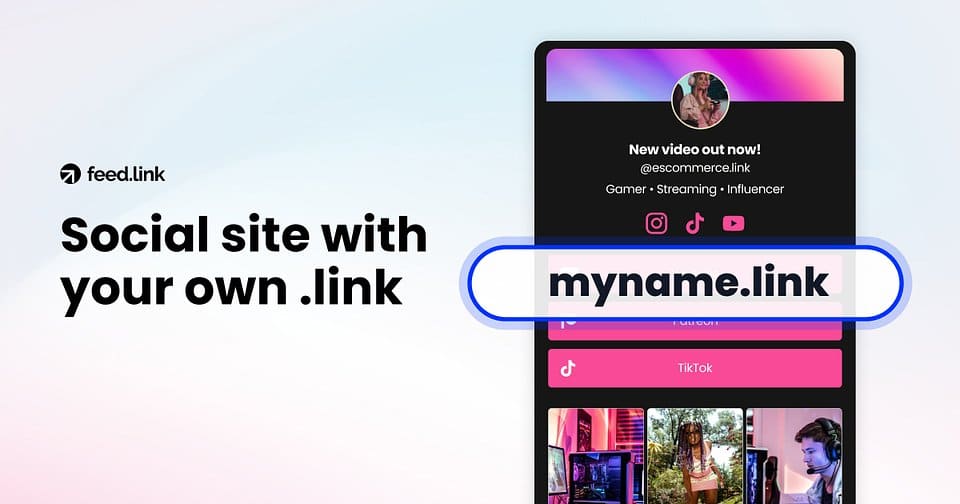
Challenges with UGC and AIGC
Now that we’ve seen the advantages of both UGC and AIGC let’s see the challenges you might face when choosing each approach.
Challenges with user-generated content
Here are some of the challenges to consider when it comes to UGC:
- Content doesn’t always have the best quality: As users create all the content, you can’t always be sure that it’s high-quality. You might need to spend a lot of time ensuring it adheres to your guidelines and brand image.
- Legal and ethical issues: Companies must ensure that UGC complies with all applicable laws and principles. This covers problems including copyright infringement, plagiarism, and privacy issues. The ethical and legal implications of UGC should be clearly understood by brands, who should then set up rules and procedures to deal with them.
- Negative sentiment: Users’ unfavorable comments and feedback about UGC is another possibility. Brands must be equipped to handle unfavorable reviews and respond to them respectfully and helpfully. Brands should be prepared to respond to complaints and concerns openly and transparently and have a strategy for handling negative feedback and comments.
- Trust and reputation: Companies must ensure that the UGC they leverage is genuine and reliable and that users think so too. Also, brands should be open and honest about using UGC and acknowledge and credit content creators.
- Compatibility with overall strategy: To really gain from UGC, brands must successfully include it in their marketing plan. You need to decide how UGC will be collected, filtered, and published and how it will be incorporated with other marketing channels and messaging.
Challenges with AI-generated content
- Creativity: Using an AI builder or generator still lacks creativity and human touch. You can’t solely rely on it – you need to spend time reviewing the content and adding emotional and human context. Producing massive amounts of content without human touch won’t get you far.
- Consistency: It’s worth noting that the quality of AI-generated content may not always match that of human-generated material. It may need extensive editing and review to ensure that it adheres to the brand’s messaging and tone.
- It’s not always accurate: If the data that AI-generated material is based on is incomplete or prejudiced, it may be biased or wrong. If not carefully trained and tested, AI models can also encourage prejudices and actively promote biases. Brands must be conscious of the possibility of bias and accuracy problems and create plans to solve them.
- Almost plagiarism? AI-generated content may give rise to moral and legal questions, particularly in relation to matters of intellectual property and copyright. Businesses must ensure that AI-generated content complies with all legal and ethical requirements and that the material’s creators are properly acknowledged and credited.
Comparison of User-Generated and AI-Generated Content
When comparing user-generated and AI-generated content, it’s important to consider the various factors that differentiate them. These factors include authenticity, content quality, time and cost efficiency, SEO and keyword optimization, and creativity and personalization. The following table provides a comparison of user-generated and AI-generated content based on these factors:
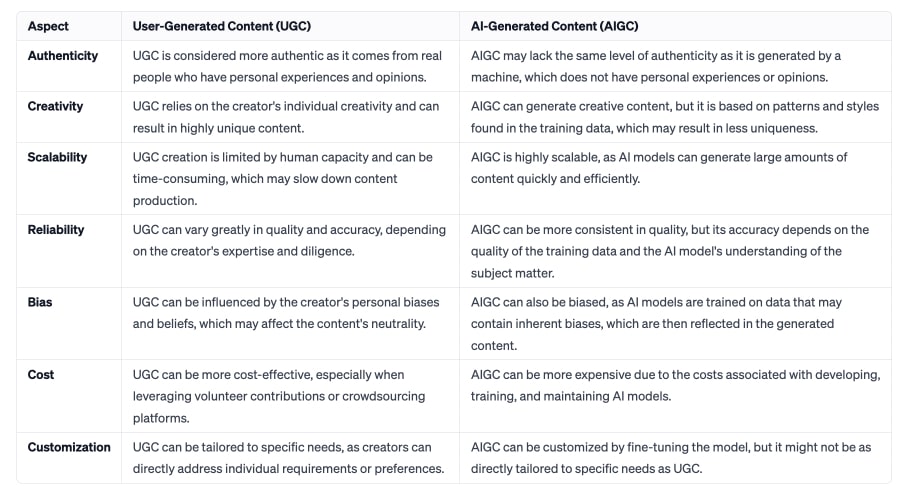
Examples of Content that AI can’t produce
You also need to know that AI can’t generate all types of content. Here are some content examples that AI can not generate:
Personal experiences
This includes content like a blog post that talks about a creator’s journey on Instagram.
If you wanted to create a post called “My Journey with Instagram Carousels: How I Boosted Engagement on My Business Account Recommendations on When to Use Each Approach,” AI wouldn’t be able to do it.`
Here is a similar example:
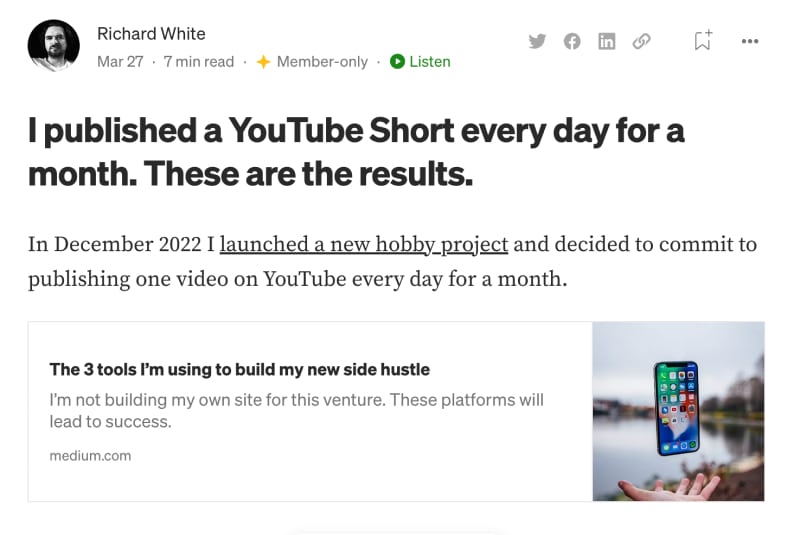
Case studies and customer success stories
Case studies collected usually from interviews with actual customers are not possible to be constructed by an AI.
The questions you can ask are from your company’s perspective, and the results and experiences shared by that particular customer are uniquely their own.
Here is an example of a customer success story that just can’t be produced by an AI:
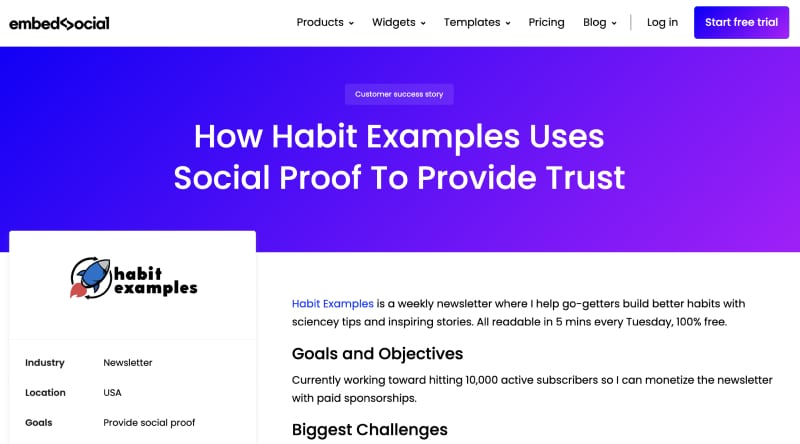
Creative storytelling
If you want to tell a story, AI won’t be able to write it as well as a human will.
It simply can’t add emotions and interesting twists. At least not yet. Having vulnerability in storytelling is a uniquely human capability and differentiation point to discover if humans or AI writes a text.
Here is an example:

Original research
Although AI can scrape data that are available on the internet, if you’re conducting research, you’ll have to collect original data and compel the report yourself.
For example, for the Reviews report, we had to extract data from our system, but we were not sure how to analyze it. Therefore, we ended asking a batch of customers who can confirm some of our findings.
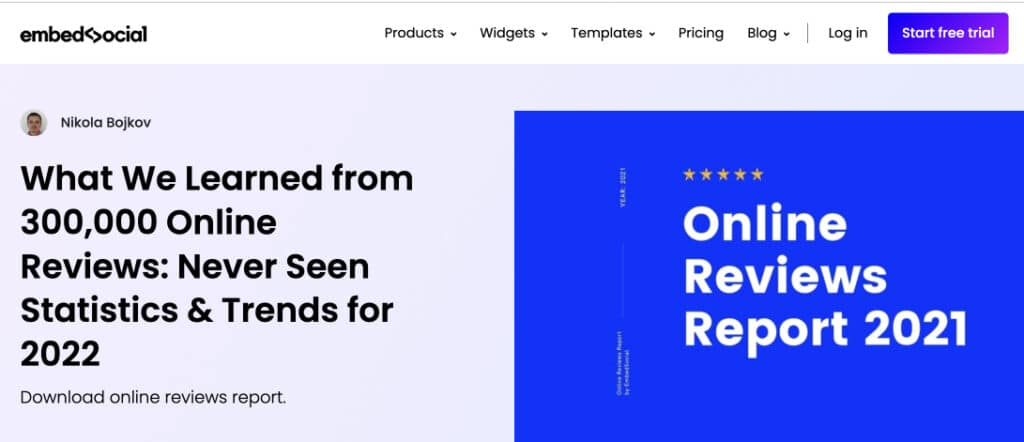
When to use UGC or AI content
We explored both sides of UGC and AI-generated content.
Now, let’s see when’s the best time to use these two types of content.
The benefit of user-generated content (UGC) is that it is produced by actual humans, who may have distinctive viewpoints and insights that AI-generated content would not have.
Since UGC is naturally more real, readers may find it more interesting. UGC can also be rapidly and readily repurposed across a variety of channels.
So, you should use UGC when:
- You want to show social proof
- You need authentic and original content
- You want to increase user engagement
- You want to show brand loyalty
On the other hand, since it isn’t constrained by time or resource limitations, AI-generated content frequently delivers greater accuracy and scalability than UGC. It also gets rid of any potential bias from human contributions because AI algorithms are made to be fair when making decisions.
Use AI content when:
- You need large amounts of content
- You want to scale your content
- You have resources to add the human touch
- You have writer’s block
Finding the Right Balance: Combining User-Generated and AI-Generated Content
To maximize the benefits of user-generated and AI-generated content, finding the right balance between the two is essential. Combining these content types can create a dynamic and engaging user experience while also boosting SEO and driving website traffic. Here are some tips and examples on how to effectively integrate user-generated and AI-generated content in your content strategy:
Leverage AI-generated content for research and ideation
AI-generated content can be a powerful tool for content research and ideation, helping you identify trending topics, keywords, and content gaps. By using AI-powered tools to gather insights, you can create user-generated content that is both relevant and SEO-optimized.
Here is an example:
Use an AI content generator to identify popular keywords and phrases in your industry. Then, create a blog post or article addressing those topics, incorporating user-generated content such as testimonials, case studies, or expert opinions.
Example
Enhance user-generated content with AI-generated elements
AI-generated content can be used to supplement user-generated content, providing additional context, insights, or data points. This can help improve the overall quality and depth of your content while also ensuring that it remains SEO-friendly.
Write a user-generated article on email marketing best practices, and use an AI content generator to provide relevant statistics, industry benchmarks, or examples of successful campaigns.
Example
Curate user-generated content using AI-powered tools
Example
Optimize user-generated content with AI-driven SEO tools
AI-driven SEO tools can help you analyze and optimize your user-generated content for search engine performance. By using these tools to identify areas for improvement, you can ensure that your content ranks higher in search results and reaches a broader audience.
Use an AI-powered SEO analysis tool to identify opportunities for keyword optimization or content restructuring in your user-generated articles. Then, update the content accordingly to improve its search engine performance.
Example
Use AI-generated content as a starting point for user-generated content
AI-generated content can serve as a foundation for user-generated content, providing a basic structure or outline that can be expanded upon with personal insights, experiences, or opinions. This can help save time and effort while still maintaining a human touch in your content.
Generate an AI-created outline for a blog post on the latest industry trends, and then use this outline as a starting point for a user-generated article that incorporates your unique perspective and expertise.
Example
Finding the right balance between user-generated and AI-generated content can create a diverse, engaging, and SEO-optimized content strategy that appeals to your target audience and drives website traffic.
The Future of AI-Generated Content
The rapid advancements in artificial intelligence technologies are transforming the way we create and consume content. As AI-generated content continues to evolve, we can expect to see several significant changes and innovations in the coming years. Here are some predictions for the future of AI-generated content, along with examples for each:
Increased personalization
AI-generated content is expected to become more personalized and tailored to individual preferences as machine learning algorithms become more sophisticated in understanding user behavior and interests.
AI-generated news articles could be tailored to each reader’s specific interests and reading habits, ensuring that they only receive content that is relevant and engaging to them.
Improved content quality
As AI algorithms continue to improve and learn from human language patterns and styles, the quality of AI-generated content is likely to become indistinguishable from that of human-generated content.
AI-generated blog posts and articles may reach a level of quality and coherence that makes it nearly impossible for readers to differentiate between human-written and AI-generated content.
Example
Expansion into new content formats
AI-generated content will not be limited to just text; it will increasingly encompass other formats, such as images, videos, and audio.
AI-powered tools could generate custom video content based on user preferences, including personalized video ads, educational videos, or entertainment content.
Example
Collaborative content creation
AI-generated content tools will increasingly be used to assist and enhance human creativity rather than replace it entirely. This collaboration between humans and AI will lead to more innovative and engaging content.
Writers and editors could use AI-generated content to help brainstorm ideas, generate outlines, or provide suggestions for improving their content’s structure and flow.
Prediction
Ethical Considerations and content regulation
As AI-generated content becomes more prevalent, new ethical considerations and regulatory frameworks may need to be developed to address issues such as content authenticity, privacy, and the potential for AI-generated disinformation.
Governments and industry organizations might establish guidelines and best practices for the ethical use of AI-generated content to ensure transparency, accountability, and responsible content creation.
Prediction
As artificial intelligence technologies continue to advance and mature, we can expect AI-generated content to evolve in various ways. Here are some additional predictions for the future of AI-generated content:
Multilingual content generation
As AI algorithms improve their language capabilities, they will become more adept at generating content in multiple languages, enabling businesses and content creators to reach diverse, global audiences more effectively.
An AI-generated content tool could automatically translate a blog post into several languages, ensuring that the content is accessible to readers from different linguistic backgrounds without sacrificing quality or accuracy.
Example
Emotion and sentiment analysis
Future AI-generated content tools may be capable of understanding and incorporating human emotions and sentiments more effectively, allowing for more engaging and emotionally resonant content.
AI-powered content generators could create emotionally tailored marketing materials that resonate with specific target audiences, adjusting the tone and language to evoke desired emotions and responses.
Example
Voice synthesis and AI-generated audio
AI-generated content will not be limited to written text. Advances in voice synthesis technology will enable AI to generate realistic, human-like voices for applications such as audiobooks, podcasts, and virtual assistants.
AI-generated voices could narrate audiobooks in various styles, accents, or character voices, providing a more immersive and engaging listening experience for the audience.
Example
Adaptive and real-time content generation
Example
Integration with virtual and augmented reality
As virtual and augmented reality technologies continue to gain traction, AI-generated content may play a significant role in creating immersive, interactive experiences within these virtual environments.
AI-generated content tools could create personalized, contextually relevant narratives for virtual reality games or simulations, adapting the storyline and character interactions based on user choices and actions.
Example
Conclusion
UGC is mostly shared on social media. This increases the likelihood of users engaging with it, which boosts brand awareness, reach, and, eventually, sales.
As AI-generated content lacks a human element, it might be less successful at emotionally engaging potential buyers.
On the other hand, AI-generated content might be valuable for swiftly producing large volumes of targeted material designed for specific audiences.
FYI: You can embed user-generated content on your website automatically. Sign up now.
FAQs about AI v.s UGC
How can you check the authenticity of your article? Well, catching AI-generated content can be tricky as AI models have advanced. However, here are some things to look out for:
– Inconsistencies in language, syntax, or context that might not look human-like.
– Repetitive phrases and sentences that sound unnaturally.
– Tone and style that don’t contain emotional elements.
– An author that has no visible or relevant background.
Google prioritizes the most quality content and doesn’t penalize AI content as long as it provides value and relevant information.
AI-written articles can differ from human-written articles by lacking emotional depth, creativity, and unique perspectives. While they can be produced quickly and are often data-driven, they may struggle with context, nuanced understanding, or maintaining a consistent tone.
The best AI content generator depends on your specific needs and requirements. Some popular options include OpenAI’s GPT-3, Copysmith, and Jasper. When selecting an AI content generator, consider factors such as content quality, ease of use, customization options, and pricing.
The optimal AI content generator varies based on individual needs, but popular options include OpenAI’s GPT-3, Copysmith, and Jasper, with factors like content quality, ease of use, and customization options being important considerations. We sometimes use Jasper for inspiration and content summarization.
AI-generated content can enhance SEO when used strategically alongside human-generated content, as AI tools can rapidly produce keyword-rich materials, but maintaining content quality and relevance is essential to avoid search engine penalties.


